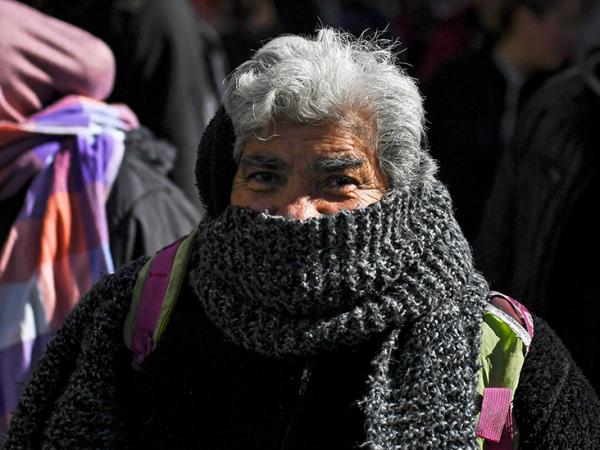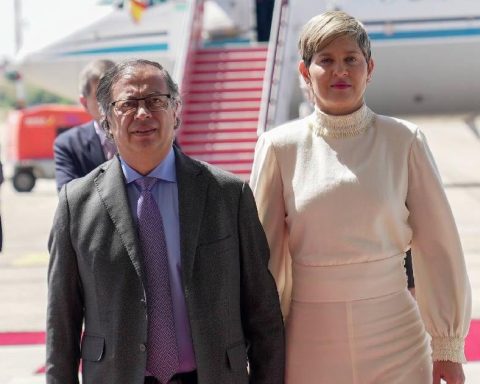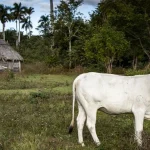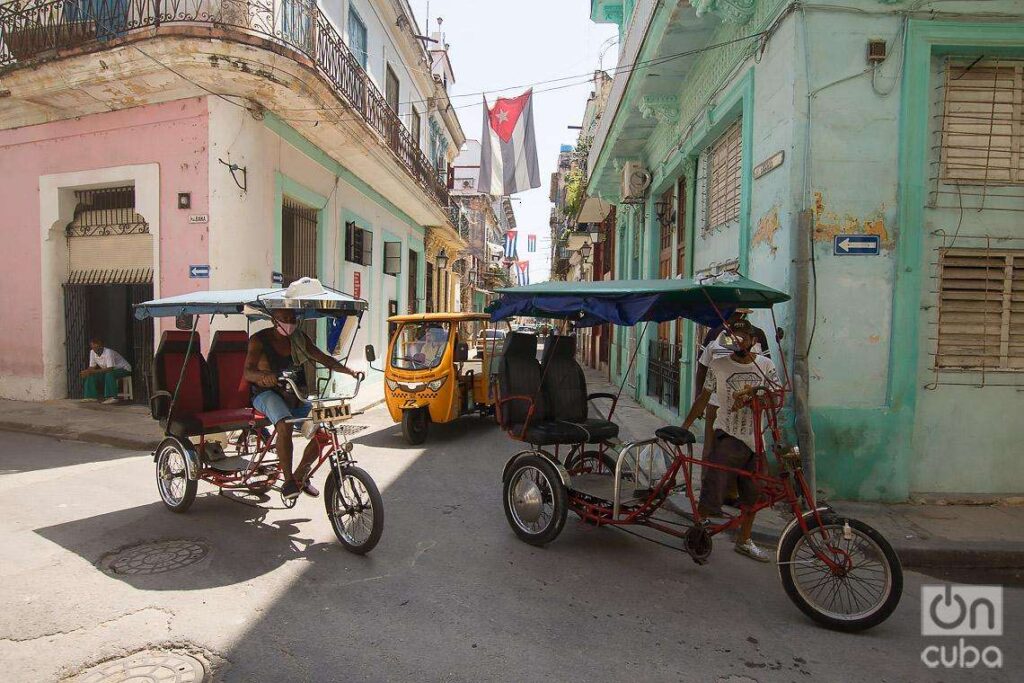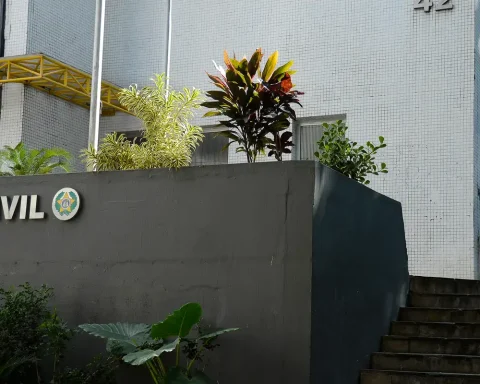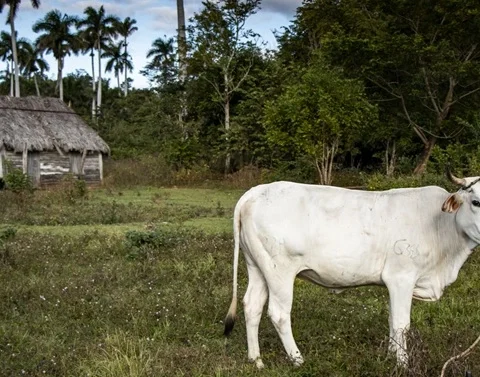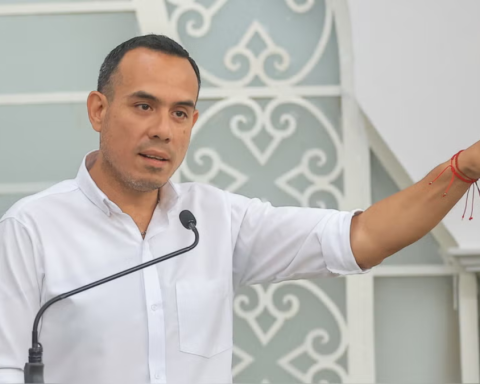Many countries have a fiscal deficit -that is, they spend more than they collect-, but for few it represents such a big problem as for Argentina.
Most of those who have accounts in the red, even some with much higher deficit levels than the Argentine, simply issue debt and thus finance the imbalance.
But the case of Argentina is very different.
The third largest economy in Latin America has spent so many years overspending (from 1900 to today, only in 10 years has the State managed to generate more income than expenditure) that the deficit has become one of its main macroeconomic problems.
It cannot solve it by issuing more debt, as the others do, because it has already asked for so much money, so many times -it is the most indebted country in the region-, that it fell into successive debt crises, going into “default” (or cessation of payments) eight times.
The distrust generated by Argentina means that today it has the highest “country risk” in Latin America after Venezuela and El Salvador, an index prepared by JP Morgan that determines the level of danger that lending money to a nation represents.
Therefore, to continue taking on debt, the country must pay much higher interest than others.
Faced with this limitation, in recent years – and especially during the pandemic – the government of Alberto Fernández increased the issuance of pesos to pay its bills, something that, according to orthodox economists, has accelerated inflation.
In July, the rise in prices reached 71% year-on-year, one of the highest inflation rates in the world, and it is expected to continue to rise.
Against this background, Fernández announced his intention to clean up public accounts.
“You can’t go on living forever with a fiscal deficit,” he said at the end of June, during a tour of Europe.
The new economy minister, Sergio Massa, who took office at the beginning of August, reiterated this message, assuring on the day of his inauguration that “the first goal of the government will be to build fiscal balance.”
Massa, who will be in charge not only of the economic portfolio but also of Production and Agriculture, is the third to lead the country’s finances in a single month, after the resignations of Martín Guzmán and Silvina Batakis.
When presenting the main guidelines of his administration, the “super minister” made it clear that his first priority will be the same as that of his predecessors: reduce the primary fiscal deficit to 2.5% of the Gross Domestic Product (GDP) – that is, what the State spent without including the payment of debt-, as established by the National Budget.
In practice, this means that the country will have to reduce by 0.5% the primary fiscal deficit that it reached in 2021 (which was 3% of GDP).
That goal is the one that Argentina agreed to last March with the International Monetary Fund (IMF), its main external creditor, which in 2018 granted then-President Mauricio Macri the largest loan in the history of that institution: US$57,000 million (of which were used -and today are owed- US$44,000 million).
But, although a reduction of 0.5% does not sound like much, the truth is that, for this country, it is quite an odyssey.
Why?
To understand it, we explain what are the four areas that represent the most budget of the State, what the “super minister” proposes to reduce that expense and why it will not be an easy task.
Many assume that public spending in Argentina is high for services such as free health and education, but the truth is that there are other things that cost the State much more.
For example, energy subsidies, which in 2021 took 8.8% of the national budget, more than public spending on Education (6.4%), Transportation (5.9%) and Health (5%).
This is the state spending that has grown the most in Argentina in recent years and today represents three quarters of the entire primary fiscal deficit in the country.
In 2021 energy subsidies represented 2.3% of GDP. If it is considered that the primary deficit was 3%, it is easy to understand why reducing this spending is considered essential.
A report prepared by the Argentine Institute of Energy (IAE) showed that, between 2010 and 2020 alone, energy subsidies cost the country almost triple what the IMF owes it (about US$130,000).
But why does the State spend so much on subsidizing energy?
The policy of subsidies for gas and electricity began to be applied two decades ago to protect the pockets of Argentines after the 2001 crisis, which sharply devalued the value of the peso and left more than half of the population in poverty.
When the economy began to pick up, the governments of Néstor and Cristina Kirchner (2003-2015) maintained the subsidies to prevent price increases from accelerating inflation and reducing consumption, key to the country’s economy, which depends 70% on the Internal market.
But a second factor caused spending on subsidies to soar: in 2008 Argentina lost its energy self-sufficiency and, since then, has had to import more and more gas and oil, with prices higher than those of local production.
By 2014, subsidies represented nearly $20 billion a year, according to IAE data.
However, faced with criticism for the growing expense that this implied for the State, the then president Cristina Kirchner – who is now vice president – stressed that the country’s level of subsidies was low compared to the world average.
Despite the fact that the Macri government (2015-2019) applied strong “tariffs” that reduced subsidies to less than US$5 billion, the pandemic, and then the war between Russia and Ukraine, increased costs again.
In 2021, Energy was the second highest expense in the State after Social Security.
And, in the first half of 2022, the increase in the international price of fuels due to the Russian-Ukrainian conflict caused spending on subsidies to increase by 116% year-on-year, the IAE reported.
To mitigate this expense, the government introduced a “rate segmentation” starting in August so that the population with greater purchasing power stops benefiting from the subsidies (which today apply to everyone).
Massa also pointed out that there will be a cap per household for subsidized energy consumption and announced that starting in September water consumption will also be segmented.
According to the official, with these measures “the State will save 500,000 million pesos a year” (close to 0.5% of GDP).
Another announcement made by the new economy minister was to freeze new hiring in “all sectors of the centralized national public administration.”
Public employment is another of the great burdens that the State has: one in five Argentines works in the public sector, whether at the national, provincial or municipal level, one of the highest figures in Latin America.
In 13 of the 23 Argentine provinces, the number of public employees exceeds that of wage earners in the registered private sector, according to a study published in 2021 by the Institute of Studies on the Argentine and Latin American Reality (Ieral), of the Mediterranean Foundation.
The growth of public employment was key to reducing unemployment after the 2001/2 crisis, which left one in five active Argentines without a job.
But when the economy was reactivated, the State continued to expand.
Both Kirchnerism and Macrismo increased the number of public administration personnel.
And, although public employment continues to be a determining factor in keeping the unemployment rate low, which today reaches 7%, the numbers show that the State has become the engine of employment.
While the number of public workers went from 2.6 million to 3.3 million in the last decade (an increase of 27%), the number of formal private workers remained stagnant, at 6.1 million, according to data from the Ministry of Labor, Employment and Security. Social.
A third announcement Massa made to balance fiscal spending was to order an audit of “social plans.”
This is what Argentines call a series of social assistance programs that seek to protect the most disadvantaged.
Both the Kirchnerism and the Macrismo increased social assistance during their governments to help the sectors most affected by the constant devaluations and price increases.
If family benefits are added -such as the Universal Child Allowance, created in 2009-, and the different programs, the percentage of public spending allocated to social assistance in 2021 exceeded 10%.
But with a poverty level close to 40%, more and more Argentines depend on economic aid from the State.
The Social Debt Observatory of the Argentine Catholic University (UCA) warned that, without this help, the poverty rate could reach 50% and the indigence rate 20%.
However, some question the economic sustainability of the social protection system, which, according to the Observatory, in 2021 helped a little less than half of the population (44.7%), a figure similar to that of 2019, before the pandemic.
Critics point out that there are three times more people who receive help from the State (about 21 million) than the nearly 6 million from the private sector who, through taxes on their salaries, are the main financiers of public coffers (since nearly than a third of workers in Argentina are informal and public employees receive more money from the State than they contribute).
The highest expense that the Argentine State has is that of retirement and pensions, which take a third of the budget.
However, far from proposing cuts, Massa announced that the government will comply with the 15% pension increase that is scheduled by law for September and will also add a bonus for those who receive the lowest salaries.
They are long-awaited announcements by retirees, 70% of whom receive minimum pensions that do not cover the basic basket.
Why then does this expense represent such a heavy burden for the State?
The main reason is that, although the purchasing power of retirees has deteriorated markedly in recent years, Argentina has one of the widest pension coverage in the region, above 90%.
This is thanks to a series of moratoriums carried out during Kirchnerism that doubled the number of retirees, allowing millions of housewives and informal workers to obtain this benefit that they would not have been able to access before.
But what is celebrated by the government as “social justice” is complicating the state’s finances, because of the 9 million retirees and pensioners that the country has today, less than a quarter made the corresponding contributions.
According to a report published by the Institute for Argentine Social Development (Idesa), only 23% of retirees made 30 years of contributions.
22% contributed less than 30 years, thanks to special early retirement schemes.
But the majority, 55%, retired without contributions.
Added to this is another imbalance on the other side of the retirement spectrum: the so-called “privilege pensions” that are paid, among others, by politicians, diplomats and judges, and that reach 1% of GDP, according to calculations by former Economy Minister Martín Lousteau.
“The pension disorder is one of the main sources of fiscal deficit,” warned the Idesa report, whose chief investigator, Jorge Colina, told BBC Mundo that the current system is “unsustainable.”
Now you can receive notifications from BBC News World. Download the new version of our app and activate it so you don’t miss out on our best content.
